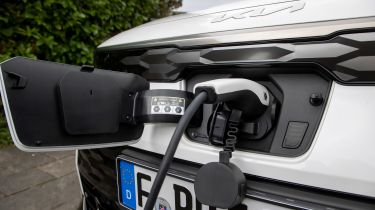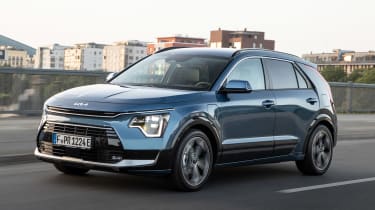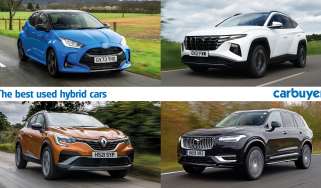Kia Niro SUV - MPG, running costs & CO2
There’s a Niro to suit most budgets and motoring lifestyles
One thing that’s important to note is that the hybrid version is by far the most affordable way to get into a Niro, costing from around £29,000. If you don’t drive many miles, or simply want a Niro on an affordable leasing deal, this could make it the one to go for. It’s fitted with an evolution of the 1.6-litre petrol engine, electric motor and small battery found in the old model, and while it will drive in pure-electric mode at low speeds, the petrol engine will kick in after a short while.
Kia Niro MPG & CO2
One thing that’s important to note is that the hybrid version is by far the most affordable way to get into a Niro, costing from around £27,000. If you don’t drive many miles, or simply want a Niro on an affordable leasing deal, this could make it the one to go for. It’s fitted with an evolution of the 1.6-litre petrol engine, electric motor and small battery found in the old model, and while it will drive in pure-electric mode at low speeds, the petrol engine will kick in after a short while.
This results in official economy figures of 64.2mpg and 100g/km CO2 emissions, putting it slightly ahead of the Renault Captur E-Tech Hybrid, which returns 56.6mpg. It should also represent a sizable cost saving versus a similar diesel model for company-car drivers paying Benefit-in-Kind (BiK).
More reviews
The plug-in hybrid costs around £5,000 more, and while it uses the same 1.6-litre petrol engine it has more power overall thanks to a more potent electric motor, fed by a larger 11.1kWh battery. This means it can travel for up to 40 miles using electric power alone, which is around 10 miles further than the old Niro PHEV could manage.
Fuel-efficiency figures are boosted to well over 200mpg as a result, but as with all plug-in hybrid models, real-world figures will depend on how often the battery is topped up and the driving habits of its owner. Road tax (VED) comes in at £10 below the standard annual rate for both hybrids.
The all-electric Kia Niro EV starts from around £37,000, and it comes with a 64.8kWh battery pack, for a driving range of up to 285 miles from a single charge. That’s a useful amount more than the range of just over 200 miles from the Peugeot e-2008. The Niro EV can also be topped up from 10-80% in around 45 minutes, and we’ve written about it in-depth in our separate Niro EV review.
Insurance groups
Insurance groups for the Niro start from 20 (out of 50) for the ‘2’ trim Niro Hybrid, increasing by one group for the ‘4’ spec. The plug-in hybrid is more advanced, and faster, so it spans from group 23 to 24. The Niro EV is quicker still, and it starts in group 28, which is competitive for an all-electric SUV.
Warranty
Kia is well-known for its seven-year/100,000-mile warranty, which is still one of the best in the business. It’s notably longer than the three-years of standard cover offered by the likes of Ford and Peugeot. Toyota offers up to 10 years of cover, but this does require servicing at a main dealership to keep going.
Servicing
The Niro requires servicing annually or every 10,000 miles, whichever arrives sooner. This may seem a little excessive for the Niro EV, which has fewer moving parts than either of the hybrid models, so we’re hoping Kia takes this into account over time by offering lower servicing prices for the all-electric model.
Which Is Best?
Cheapest
- Name1.6 GDi 127 Hybrid 2 Nav 5dr DCT
- Gearbox typeAuto
- RRP£30,085
Most Economical
- Name1.6 GDi 168 PHEV 2 5dr DCT
- Gearbox typeAuto
- RRP£35,325
Fastest
- Name1.6 GDi 168 PHEV 2 5dr DCT
- Gearbox typeAuto
- RRP£35,325











